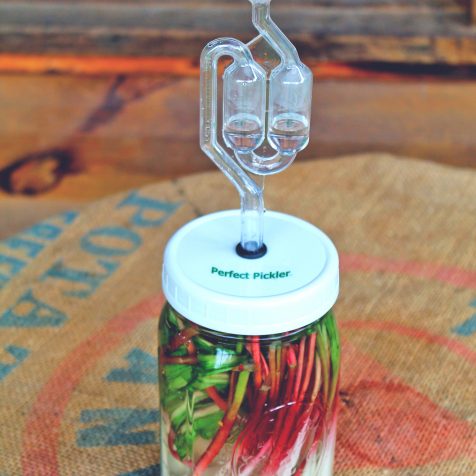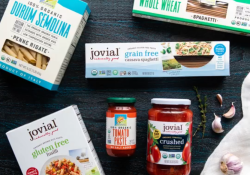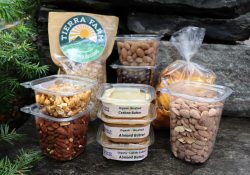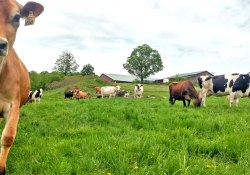Lacto-fermented Ramps

Description
We’re celebrating gut health this week at the Co-op and our weekly sale from May 18th – 24th offers lots of gut-healthy foods to bring balance to the microbiome within! Another economical option is to try making your own probiotic veggies at home. It’s much simpler than you might think and provides a great way to preserve the harvest of seasonal veggies without the hassle of canning or blanching/freezing. This kind of pickling is different from traditional vinegar pickling in that you’re not using vinegar or heating the mixture, thus preserving the natural cultures and rich enzymes present in the vegetables. All fruits and vegetables have beneficial bacteria such as Lactobacillus on the surface. In an anaerobic (oxygen-free) environment, these bacteria convert sugars into lactic acid, which inhibits harmful bacteria and acts as a preservative. You’ll need one special piece of equipment called a “Perfect Pickler”. This handy little gadget turns any canning jar into a lacto-fermenting machine without the much larger investment for a ceramic fermentation crock. You can find one online at perfectpickler.com and it will pay for itself after just a few batches. A quick google search of “canning jar fermentation lids” pulls up lots of similar options. Lacto-fermented vegetables pack a healthy punch of probiotics (at a cost well below most supplements and ready-to-eat lacto-fermented foods on retail shelves) to heal and maintain a healthy gut. These beneficial microorganisms help our bodies perform myriad functions including digestion, detoxification, nutrient absorption, and immune system response. Plus, they happen to taste amazing! This particular recipe is for lacto-fermented ramps, but feel free to sub in any veggies you have in abundance. Chunky veggies do best if they are chopped up or shredded into smaller bits of relatively uniform size. Get creative with the combinations! Just remember to use non-chlorinated water and non-iodized salt. Chlorine and iodine will both deter the beautiful chemistry that must take place for successful lacto-fermentation. Instead, choose distilled water or spring water. Kosher salt makes a great option, or check out the “Real Salt” we sell in our bulk department. It’s unrefined, non-iodized, and contains over 70 minerals!
Instructions
Rinse ramps well. Snip the roots from the bottom and the top 1/4 of the leaves. Make a brine by combining the salt with the water without heating the solution. I also chose to add about a teaspoon of whole black peppercorns, a teaspoon of whole coriander, 1/4 teaspoon of crushed red pepper flakes, and a bay leaf for some added flavor. The only essential ingredient is the salt, so feel free to keep it simple if that’s more appealing.
Once the brine is mixed and ready, pour it over the ramps in the canning jar and fill until the brine is 1/2 inch below the jar rim. Next, float the brine overflow cup that comes with your kit by pressing it into the top of the solution until the rim of the cup is level with the rim of your jar. Some of the brine will overflow as you do this, which is fine since you want the brine level at 1/8th-inch below the jar lip once the cup is in place. If the brine gets into your cup, dump it out and try again. Next, install the gasket into the jar lid. Wipe the jar lip clean and twist the lid into place. Tighten just until snug. Finally, add water to the fermentation lock until it reaches the designated line and gently twist the fermentation lock into the top of the lid until it is snug and upright. Do not push it in too deeply.
The final step is to jot down the date and place the jar in a spot that is away from warm appliances or direct sunlight. The ideal temperature range for fermentation to occur is between 68-74 F (20-23 C). The liquid in the jar may cloud a little, and bubbles will form and rise as the wild fermentation takes place. This is how you know it’s working! After four days, have a taste to see if they are tart and sour enough for your taste. If not, give it another day or two and re-check. When the pickles are perfect, replace the pickler top and fermentation lock with a regular jar lid and store in the refrigerator. The pickles will continue to ferment in your fridge but at a much slower rate. They will stay fresh for months! Eat as a snack, use as a garnish, chop and serve with meats, or toss into salads.



